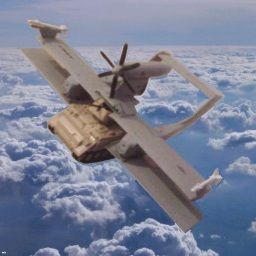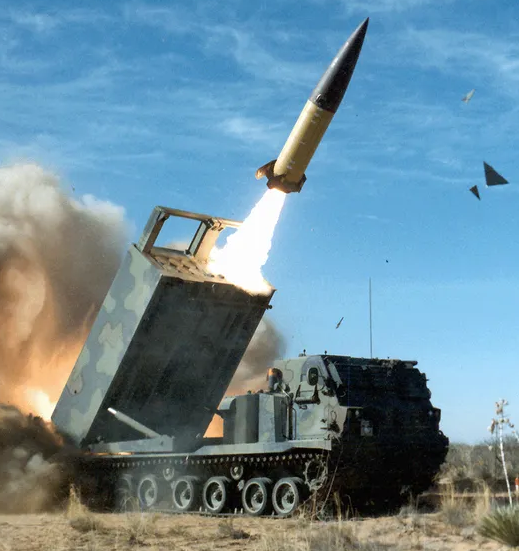None of the above, all would require infrastructure to support their equipment - infrastructure that is decades beyond the capabilities of the time. 1941 wouldn’t even have the electricity generation capacity to turn the lights on.
Instead I would bring the Pentagon. Forget the equipment, that building is full of people who study and operate large-scale logistics, operational security, information collection and analysis, battle tactics and broad strategy. Plus, I guarantee you there’s a copy in there of all the records ever collected about the Axis military, and hundreds of postwar analyses of those records - deployments, resources, communications, technology, officer profiles, command structure. That information could probably end the war in a year.
Intelligence, logistics and planning win wars.
Too credible
Oh shit, you’re right, I forgot where I was.
Until you realize that interference with the “timeline” means many of the battles never happen, new tactics can be countered, and modern logistics require strong communications - you have info on the wrong war.
A boomer with non-gps ICMS would literally make a world of difference. Hell, transporting a modern university and all its research, staff and equipment could make a world of difference. Include climate change results.
Until you realize that interference with the “timeline” means many of the battles never happen
Sure, but that would be the point actually. If you had the kind of complete information about the Axis military deployment and resources in 1941 that this scenario would provide, you wouldn’t apply that information willy-nilly, one battle at a time. You would plan a complete campaign to disable the military systems of Germany and Japan all at once, and bide your time until you could implement it.
You would know where every major resource storage is, every production facility, every training facility, every unit deployment, every command headquarters - and the enemy wouldn’t know that you know that yet. You would just fully decapitate the command and logistics of the Axis all at once. Any remaining battles would just be a cleanup operation - they can’t run tanks, airplanes or ships if we wipe out all of their fuel storage and production because we know where all of it is (or was) in 1941. And because you have the Pentagon staff, you have capable people who could actually plan and organize such an operation.
new tactics can be countered
Eventually, maybe, but if you planned your operations right there simply wouldn’t be time. The point isn’t to win battles, it’s to take away the enemy’s ability to start a battle.
modern logistics require strong communications
This is true, and the communication options are limited by the time, but we’re not talking about trying to replace the Allies’ existing logistics infrastructure. We’re talking about using what the Allies already have, with perfect knowledge of what the Axis has when and where, and then picking the right moment to disable their military infrastructure across the board.
The US military is effective partly because it has so many bases. If you time traveled a single base back in time it would still need modern logistics from other bases. What ever they had in 1941 isn’t air to air refueling an f-35.
But probably Norfolk because of the carriers who would still need replenishment from other ships not in Norfolk.
I wouldn’t do an airforce or naval base because modern air and sea systems couldn’t be repaired and resupplied in 1941. Tanks still run on diesel and can fire the munitions used in WW2 so that’s a possibility but they still can’t be repaired and transporting them to Europe would be a significant undertaking. Imagine bringing them to the past only to lose half of them to a uboat in the middle of the Atlantic. They also wouldn’t be very useful in the Pacific.
I’m going to go with Liberty. It has army special forces command, a Ranger regiment, and a modern medical facility. I think the most valuable thing we could send back to 1941 is knowledge and training. Deploy the Rangers as trainers and advisers, send the medical personnel to teach modern trauma medicine and lead surgical units.
I don’t think modern Rangers hold significant advantage over WWII rangers. I think they would actually be a detriment, as the WWII rangers were familiar with the technologies available in that time period. Those modern rangers do carry more radios than the entire invading force had during D-Day. But, any base you send will have plenty of radios to issue.
My first thought was Norfolk. They’ve got enough ASW assets to stop the U-boats that were decimating the convoys. Yeah, they won’t be able to rearm modern weapons or repair/replace certain damaged systems, but with the U-boats out of the way, the original fleet would have been much more successful. Even after the modern weapons are exhausted, the C3/ISR capabilities of the future fleet will greatly enhance the operations of the past.
My second thought is Wright Patterson AFB, home of the US Air Force museum. Designers get to tear apart aircraft that wouldn’t be built until after the war, but not so advanced that they exceed the past nation’s ability to produce. They get turbine engines 4 years early, and figure out all the transonic effects thet kept them from breaking the sound barrier. Turboprop-powered heavy bombers, flying higher and faster than anything the Axis can throw at them. Turboshaft powered submarines, destroyers, PT boats, helicopters, tanks
Third thought is to skip straight to the endgame and try to accelerate the Manhattan project. It might be a bit of a stretch to call it a “military base”, (and it’s not on the list above) but we could send them the Savannah River site. They get more plutonium than they know what to do with. With enough plutonium, they can afford to drop demonstration bombs in unpopulated areas of both the Asian and European theaters, possibly without needing to bomb Hiroshima or Nagasaki. We can avoid the need to invade both Japan and Germany.
Any base we send would have modern computers and some programmers. The German Enigma code could be brute-forced in a matter of hours on a modern computer. That alone is going to shorten the war in Europe by months to years.
By my calculations, the most backwards-compatible thing is probably going to be booze. Booze in 1941 and now are pretty much the same thing with minor superficial differences. So I would send all of Camp Pendleton back to 41. Nailed it.
Only concern would be reach. There’s only so many personnel at liberty and a whole lot of war front.
Either AFBs, I feel like a modern aircraft would be hella support for either European or Pacific fronts.
Blinkov’s Battlegrounds did a detailed thought experiment: what happens if a single F-15 is transported to 1941 Pearl Harbor. What could it do?
F-15 Video Conclusions
He determined the most effective thing possible is drop seven 2,000lb laser guided bombs right into the heart of each of the Japanese carriers. While this is unlikely to sink all of them, it would at minimum cripple them and allow the undamaged US warships in the area to catch up and finish them off. Thus loping off a massive portion of Japan’s naval power right at the start of the war.
He also did a thought experiment along similar lines in a different video, if an entire modern supercarrier was transported back to WWII. Both videos are some of my favorites.
They could, for a little while. You’d have a very hard time refining petroleum fuel in 1942 to the quality necessary for the jets, so you’d be limited by however much was stored on the base.
I’m also not sure how you’d deploy those aircraft across the Pacific or Atlantic other than disassembling, shipping and then reassembling them.
Norfolk has four carrier strike groups and the entire Atlantic submarine fleet. Even without the ability to repair or resupply, just with what they currently have as far as ordnance goes, that wins the war immediately.
You take a week at most to position submarines in the right spots and then eliminate Axis leadership in a single simultaneous strike.
I’m guessing Norfolk is home base for a boomer or two? Yeah, I’d go for a pair or three thermonuclear bombs ending every fight, every front, overnight. Smash Berlin, Toyko and, just because Russians, Moscow.
just because Russians, Moscow.
Leningrad looked at me funny, I swear.
Mmk 8 still left in the pot
I mean, Moscow is big, we don’t have to be stingy.
Boomers and SSGNs are stationed at either Kings Bay, GA or Naval Base Kitsap in Washington.
Why attack Russia? Aren’t they our friends now?
edit: anyone down voting a relevant terminator reference in this place should be perma banned from the internet
Korea is split in 2 courtesy of the Soviet Union and China post-WWII.
And then there’s the whole Cold War, Berlin Wall, gulags, etc.
Ukraine, Cuba, South America, Africa, election interference, OPEC, and the list goes on.
Ask Patton.
Moscow
Just nuke Moscow, and send a message to the Germans and Japanese to surrender, or they’ll be next.
Plus, Italy. “Hand over the fresh pasta, all of it.” would be enough. Just don’t forget to send them a note. It might save Monte Cassino Abbey and a bunch of other cool stuff.
I like your style.
Wouldn’t most US military equipment become pretty useless without jet fuel (also needed for tanks), the Internet and GPS?
The engine in the Abrams is actually a “multi-fuel” engine. It’s probably cleanest and most efficient on jet fuel, but it can run on marine diesel which is basically trash fuel.
Run it on moonshine.
torpedo juice
Jet fuel is basically kerosene, which was invented in 1846 and available from refineries long before diesel (1894) and gasoline (1892). Refineries were producing fuel that jets could burn long before jets existed. Most military aircraft can burn diesel or ordinary kerosene if jet fuel isnt available, they just need to be careful to avoid gelling, which can occur in the cold air at high altitude.
GPS is needed for a certain degree of precision in standoff weapons. Without it, they have to rely on laser or TV guidance, or dead reckoning. The ring laser gyros and accelerometers they use in their inertial guidance systems are far more accurate than the guidance systems used aboard V1 and V2 rockets, which were themselves surprisingly effective.
GPS is not required for navigation of manned aircraft: they can rely on terrestrial radio beacons or dead reckoning with their own inertial navigation systems.
I can’t think of a weapons system that actually requires Internet access.
Minot. Curtis LeMay would have had wet dreams over it.
I would take fort castra back if it were a guaranteed win just to see how the fuck they manage to pull it off.
I had to look up castras and now, I must subscribe to your newsletter.
Reminds me of the movie The Final Countdown…
Fort Hood.
Now known as Cavazos. The country decided to maybe not name bases after traitorous losers.
Thank you for your insight. The Army doesn’t have bases, they have “posts”. That one was my grandparents’ first post after they got married. My mother was born in the post hospital at Fort Bragg. I don’t know you. You don’t know me. Have a nice evening, anyways.
Fort Hood
Fort Polk not listed because they’re that bad.
Sierra Army depot, there is probably some weird shit there thatd be fun to give to the WW2 US military.
Norfolk
Waco












